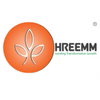We live in extraordinary times that we call the 4th Industrial Revolution. Our short-sighted behavior and practices till this point in time have led our planet to the brink of disaster. The myopic decision and drive have led to the manifestation of systems that are outliving their utility leaving us currently incapable of addressing the future. Our accountability, therefore, is not to continue duct taping the legacy, but to create new systems from the scratch that is relevant for the future. Ones that will stand the test of a long-term cycle, build rapidly and renew from a higher threshold of capability.
The digital revolution that offers at its core the democratization of systems is a very powerful tool to Create Value; Connecting Life, Learning and Living which serves each other purposefully. Every enterprise has the opportunity to structure its business to a sustainable existence. The evidence of a shared economy is already promising. But there is so much more potential when we can harness this to actually create and deliver value as opposed to dancing with symbolism. The several incremental evolutions of life and technology innovation have brought us to a point of elevating us to a higher threshold of disruptive adaptability. Ignoring this opportunity is an inevitable invitation to disastrous consequences.
The Information Technologies (IT) we had adapted until this point in time in our lives was commercial and transactional to a large extent. There are seven Technologies identified by MIT, that are altering the life as we know.
- Pervasive Computing: Inclusive of IOT, Blockchain, AR, VR, Blockchain etc
- Machine Learning or Artificial Intelligence
- 3D/4D Printing
- Robotics
- Bio-Technology
- Nano-technology
- Wireless Mesh Network
These technologies are connecting the seven stations of life that we have been used to interweaving irrespective of the society we live in.
The significance of these technologies is their power of crossing over ecosystems to facilitate life. It would be a terrible waste of money, time and resources to, therefore, implement them in isolation. Hence the relevance of a connected ecosystem that leverages shared systems, which manifests solutions as Platform, Product, Process and/or Projects (Services) mutually inclusively. When Technologies become a distinctive factor to what each enterprise considers its area of specialization, and develops capabilities to focus and succeed. This allows others as well to focus on their core capabilities and collaborate for the larger good of the Customer Ecosystem.
Uber is an-oft referenced example of a shared services economy, but it is just as a starting point. In order to hail a cab, you start and end the transaction on your mobile phone. Though the cab ride is centric to your engagement and experience, it is three technologies orchestrated concurrently including digital, enterprise and information technology deliver a unique experience every single time. The larger point of Uber would be its contribution to reducing Carbon Footprint; reimagining its connection to the seven stations of life as depicted in Illustration above
Those of us who have had the benefit to use Uber in different parts of the world will easily identify its flaws in its inability to be globally seamless, culturally sensitive and uniformly expressive for its Customer Ecosystem. This does not include the progress of technology whether it is IOT in cars, the ubiquity of money or simply other forms of more relevant integrated ecosystems. However, the lowest hanging fruit is commerce, and this is being applied using the shared services principle to order food using the same app. The lesson to glean from this overhyped business model is standardization principles of the past generation will not work on next-generation businesses that need to be designed and built on the principles of Uniformity across Strategy, Process, Capabilities, Technology & Applications, and Infrastructure. Enterprises will choose their scale and structure of positioning in this manifestation of technology depending upon their ability to visualize, execute and participate. It is inescapable to recognize the reality that a design thinking mindset is required that allows decision making from the perspective of both; determining the future as well as making things work in the present with precision.
Enterprises would need to address the transformation that is required through design; be they startups or Fortune rated incumbents. It is mandatory that their design is moored both towards Top Line / Long-Term and Bottom Line/Short Term.
It is evident that the 4th Industrial Revolution is all about value creation rather than value management. We have authored a White Paper titled: “Discerning Value — An Essential for the 4th Industrial Revolution”. This white paper makes a case for renewed thinking on energizing the enterprise and business organization to Create and Manage Value mutually inclusively. This can be achieved only when every enterprise stops to examine its true reflection in the mirror in the context of staring back at us and mapping a journey in that relevance. The energy needed here is akin to rocket fuel and not one that powers a jet or a car. It is time to connect universally and tap into its infinite energy. In doing so, the boundaries of human mediocrity can be challenged for the greater good of this planet.
Hreemm is an Enterprise with a mission to facilitate Innovations that dramatically improves the quality of living in every aspect of life. We are building an Innovation Platform that aims to transport Intellectual Property from conceptualization to commercialization in a continuum.
